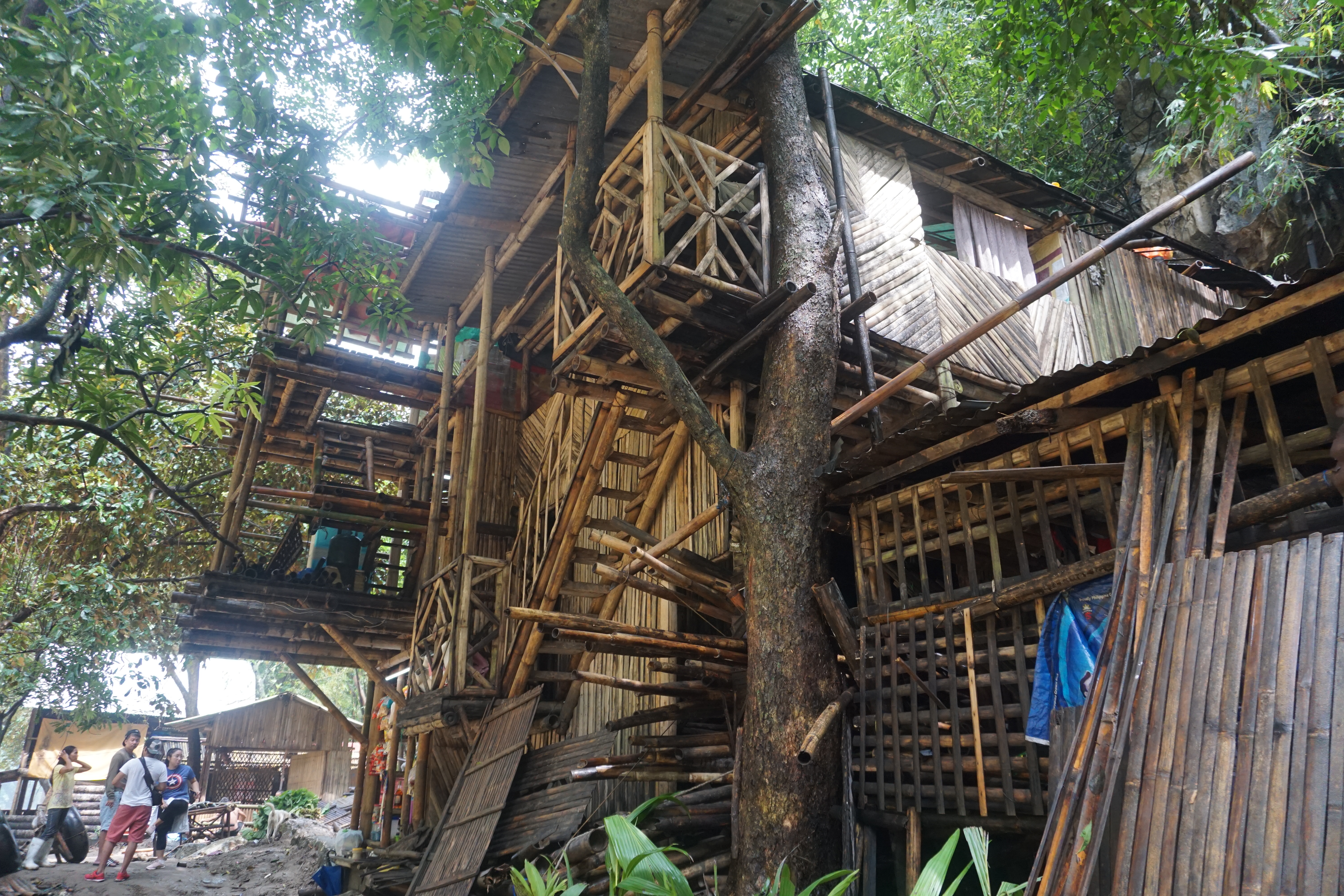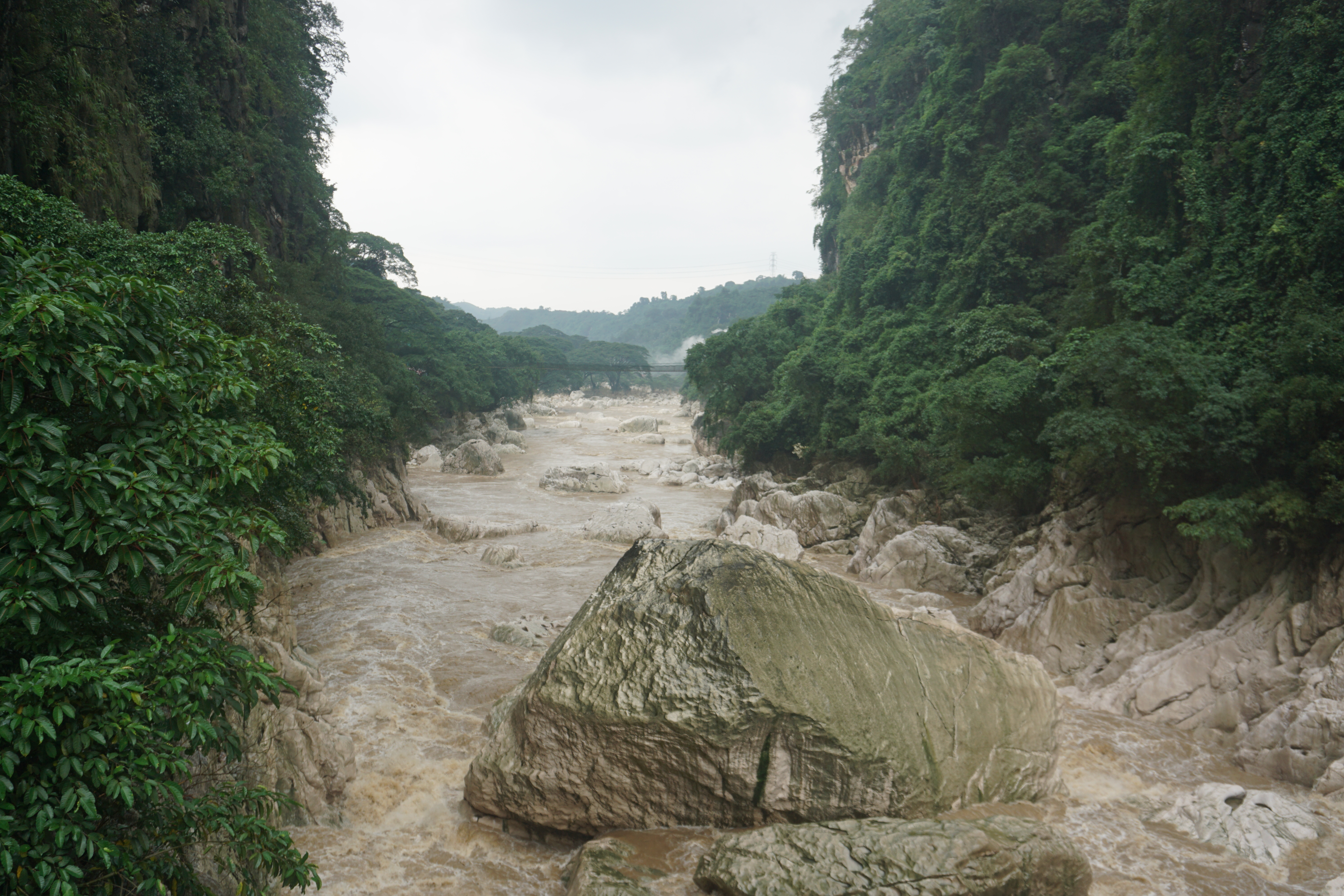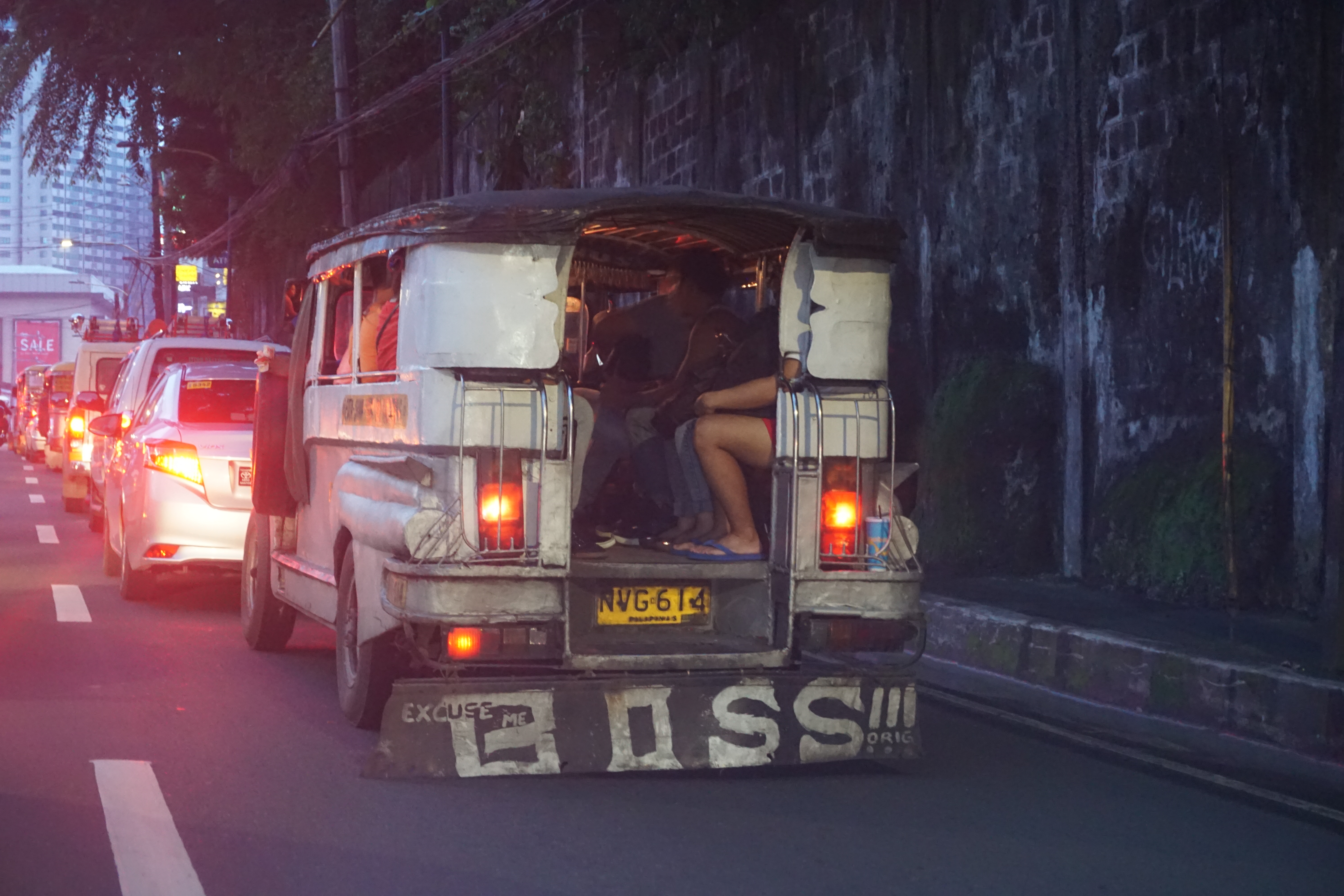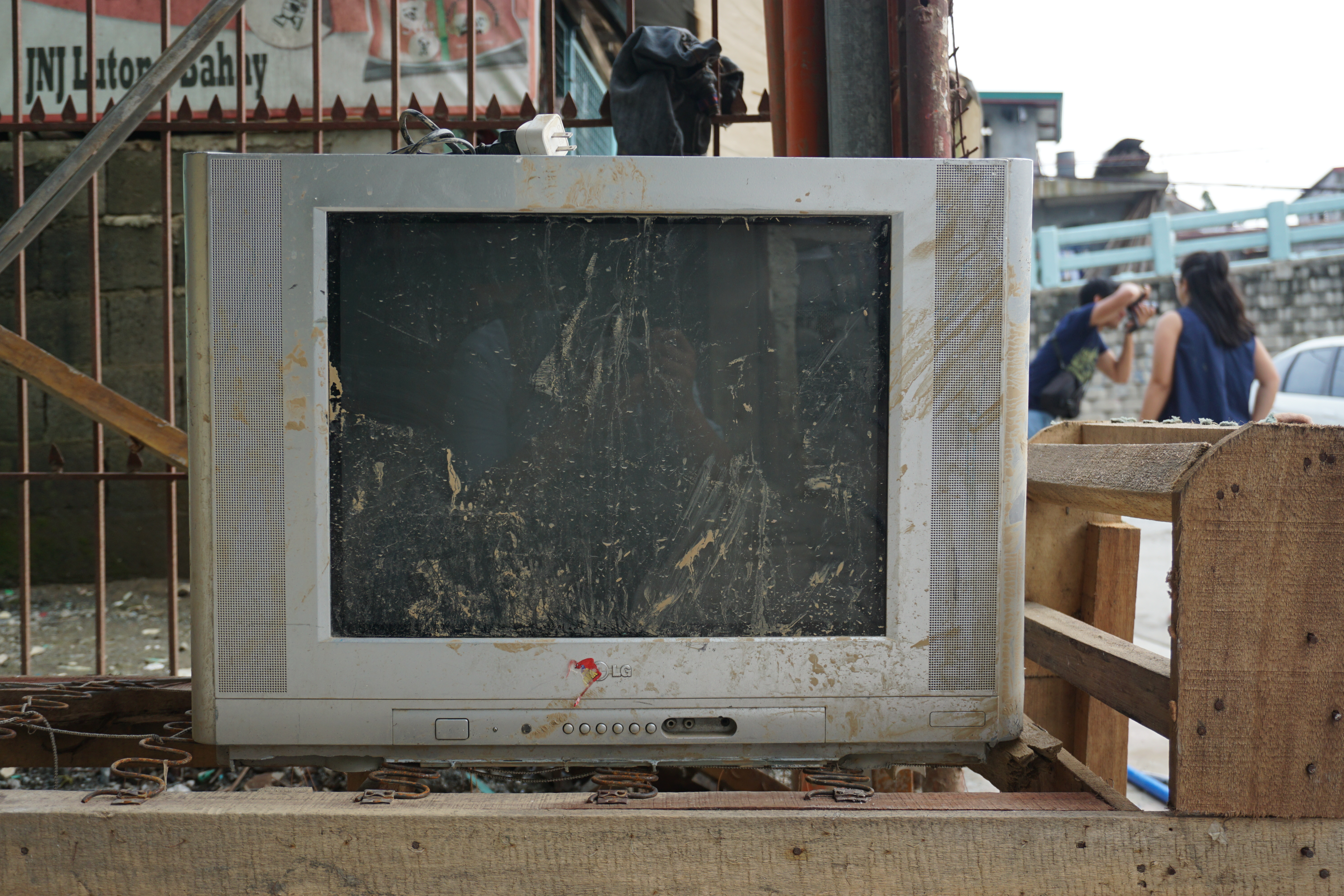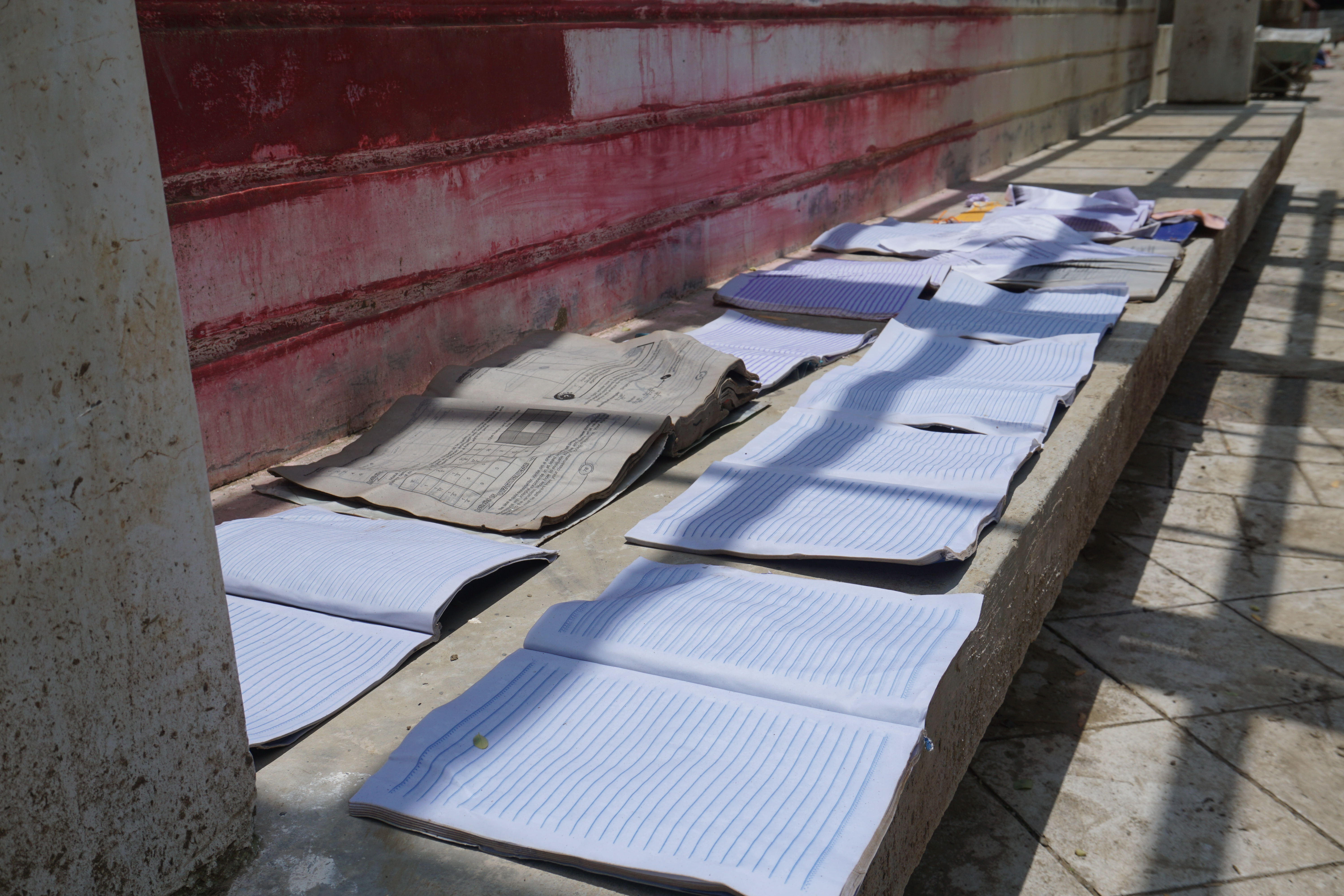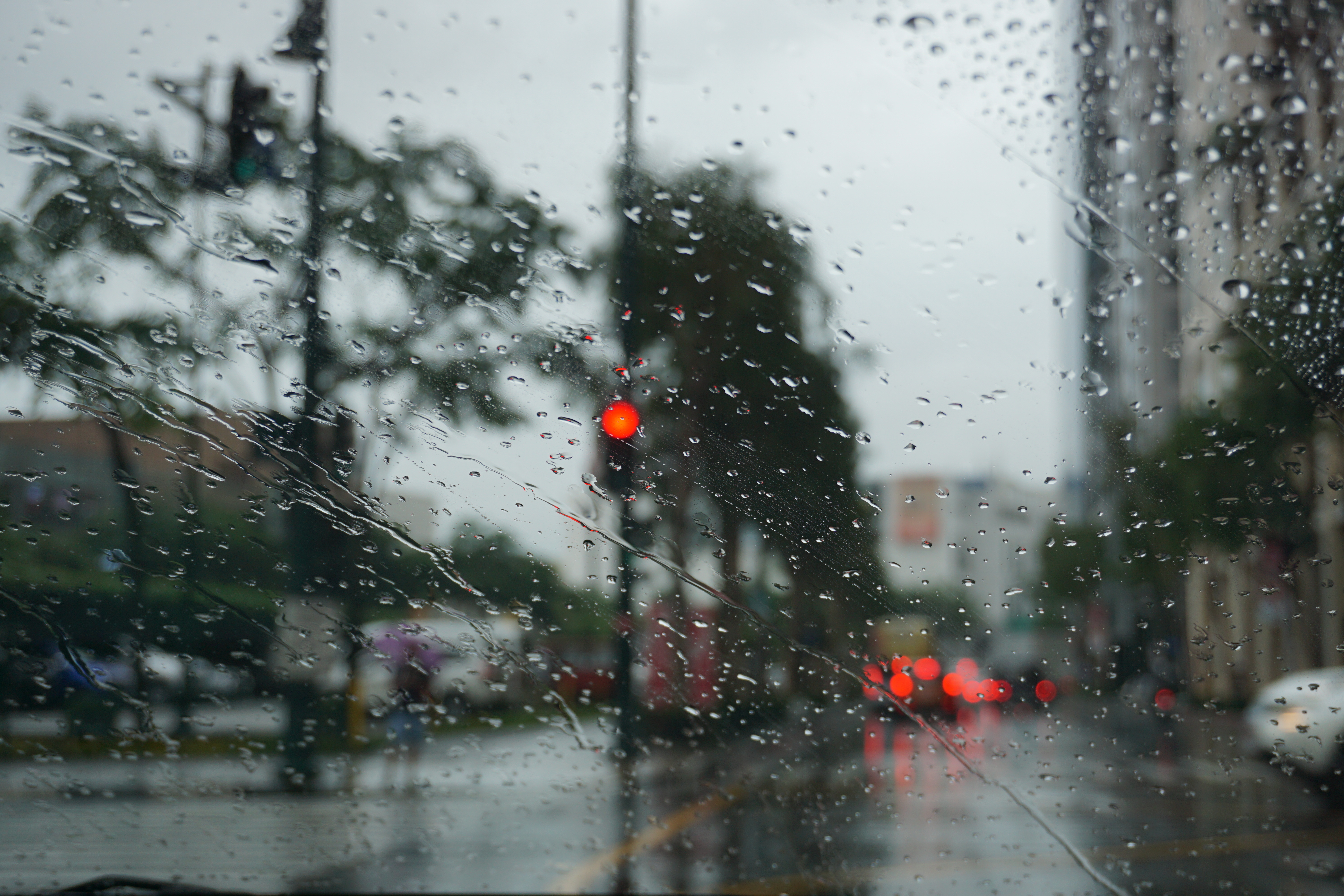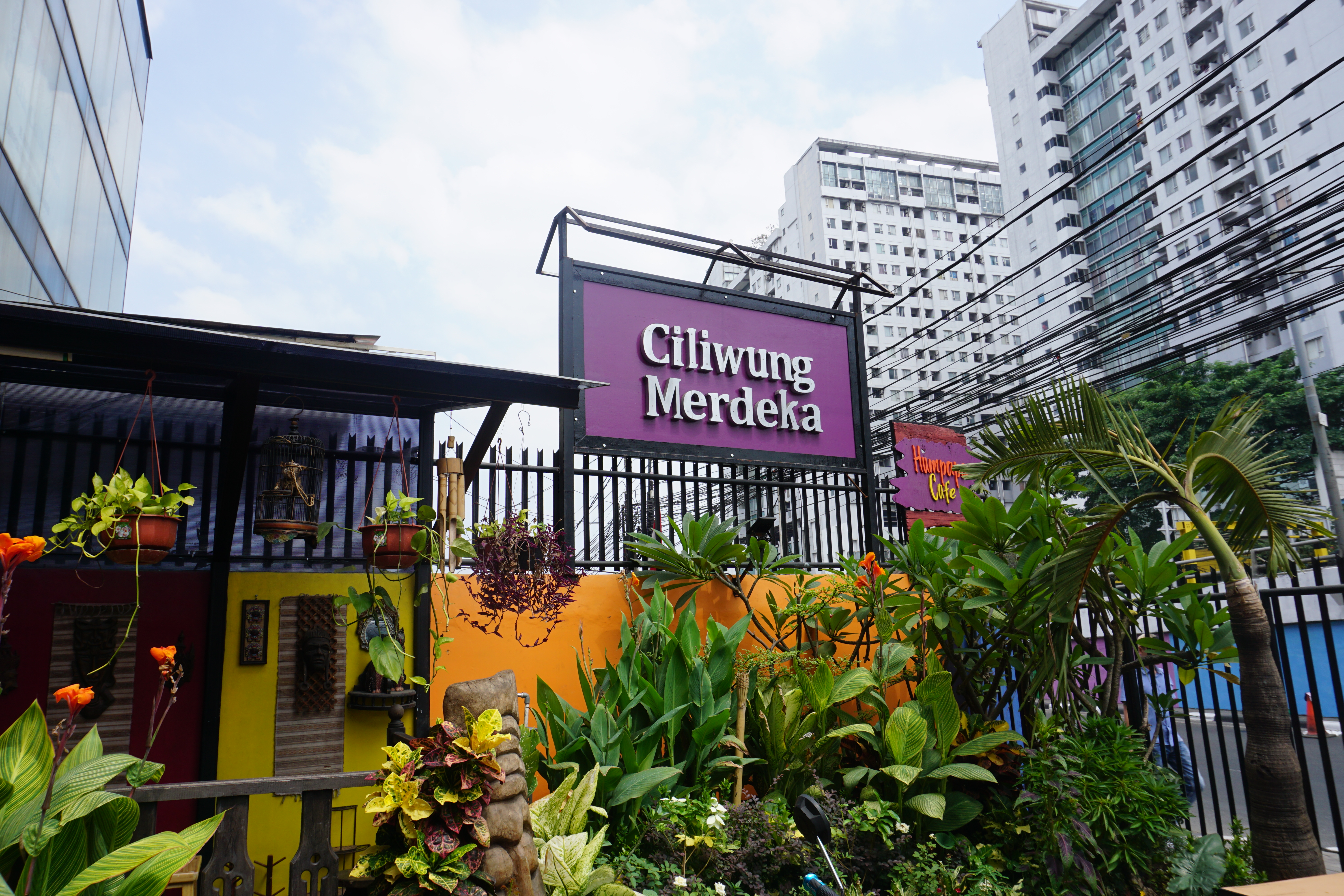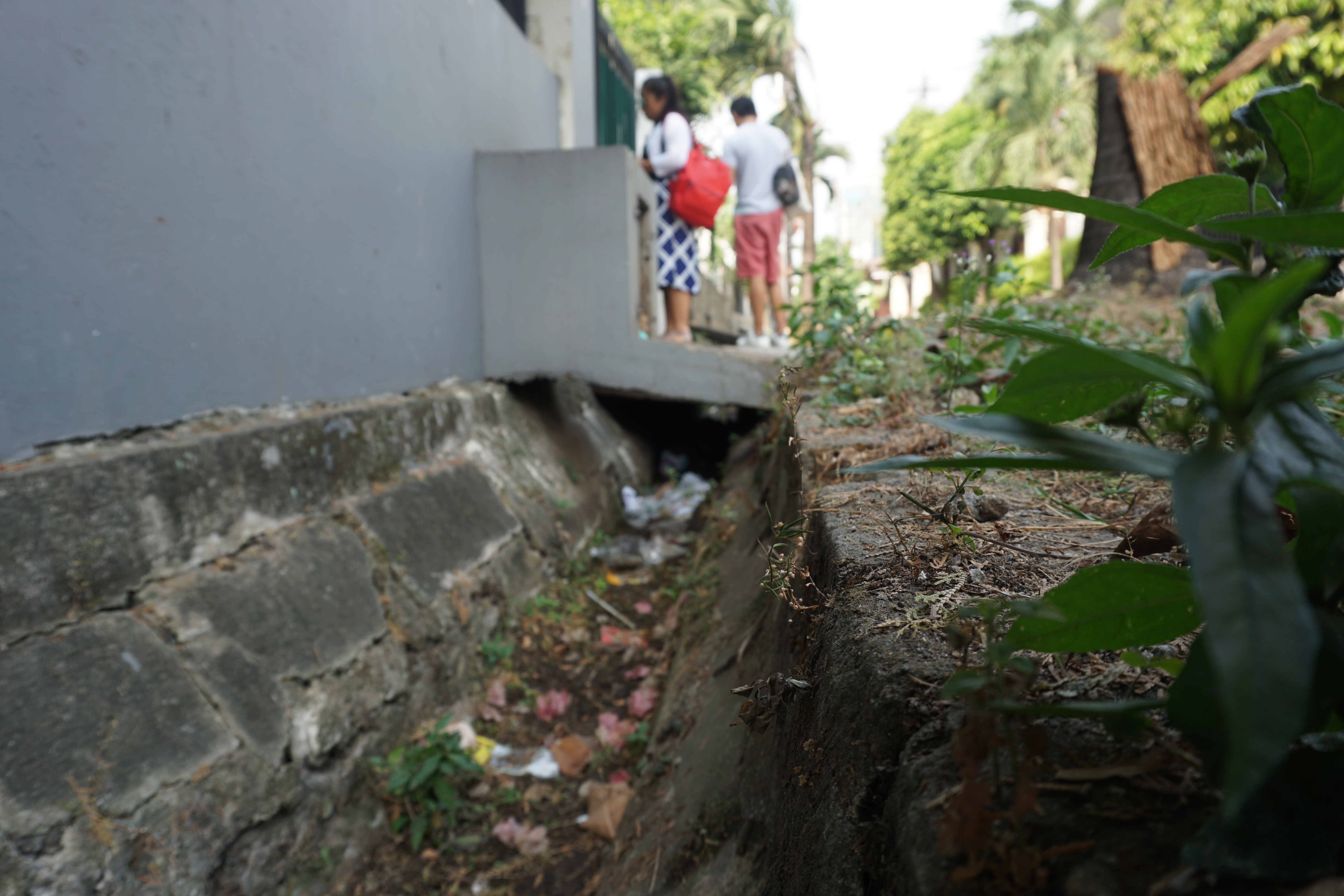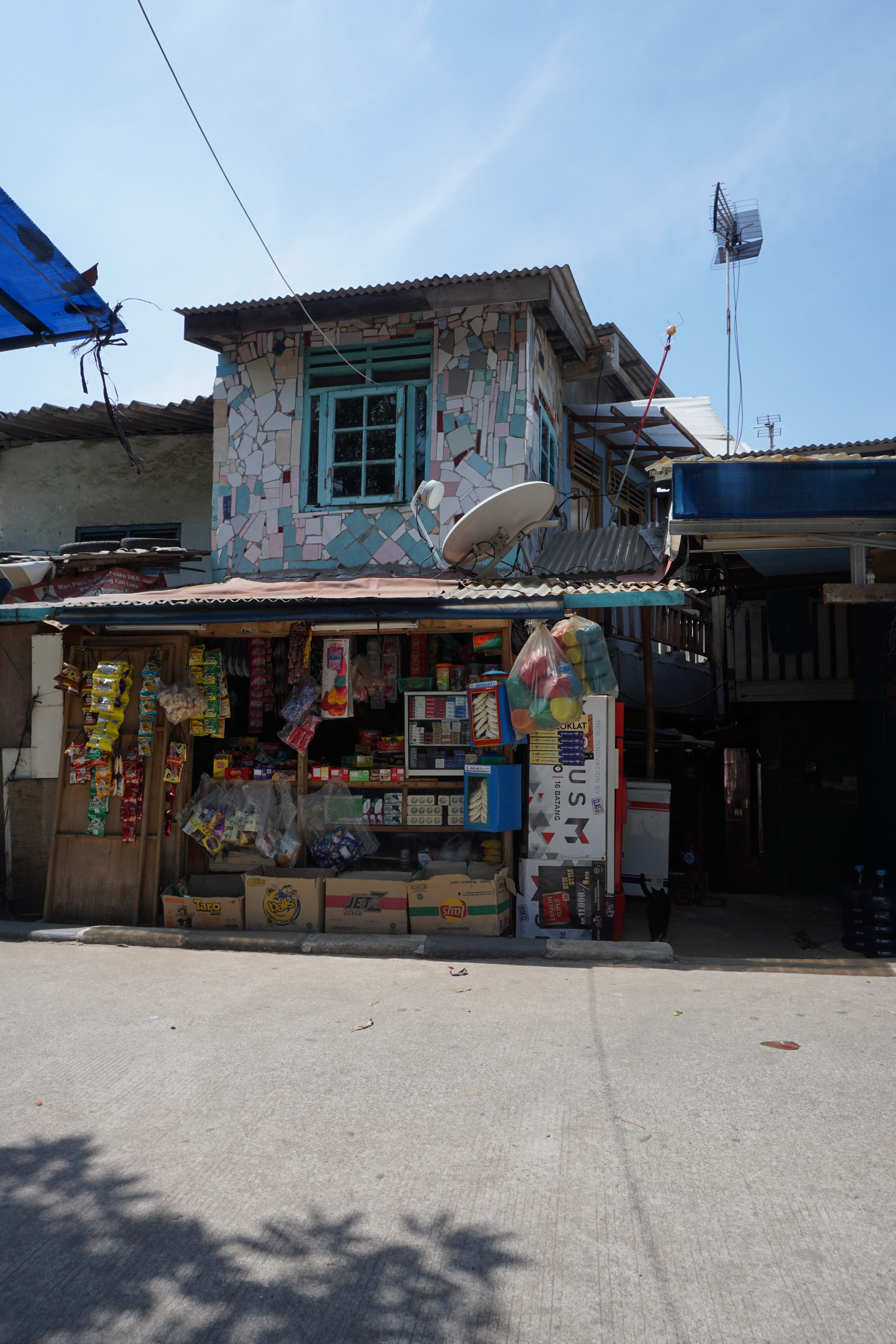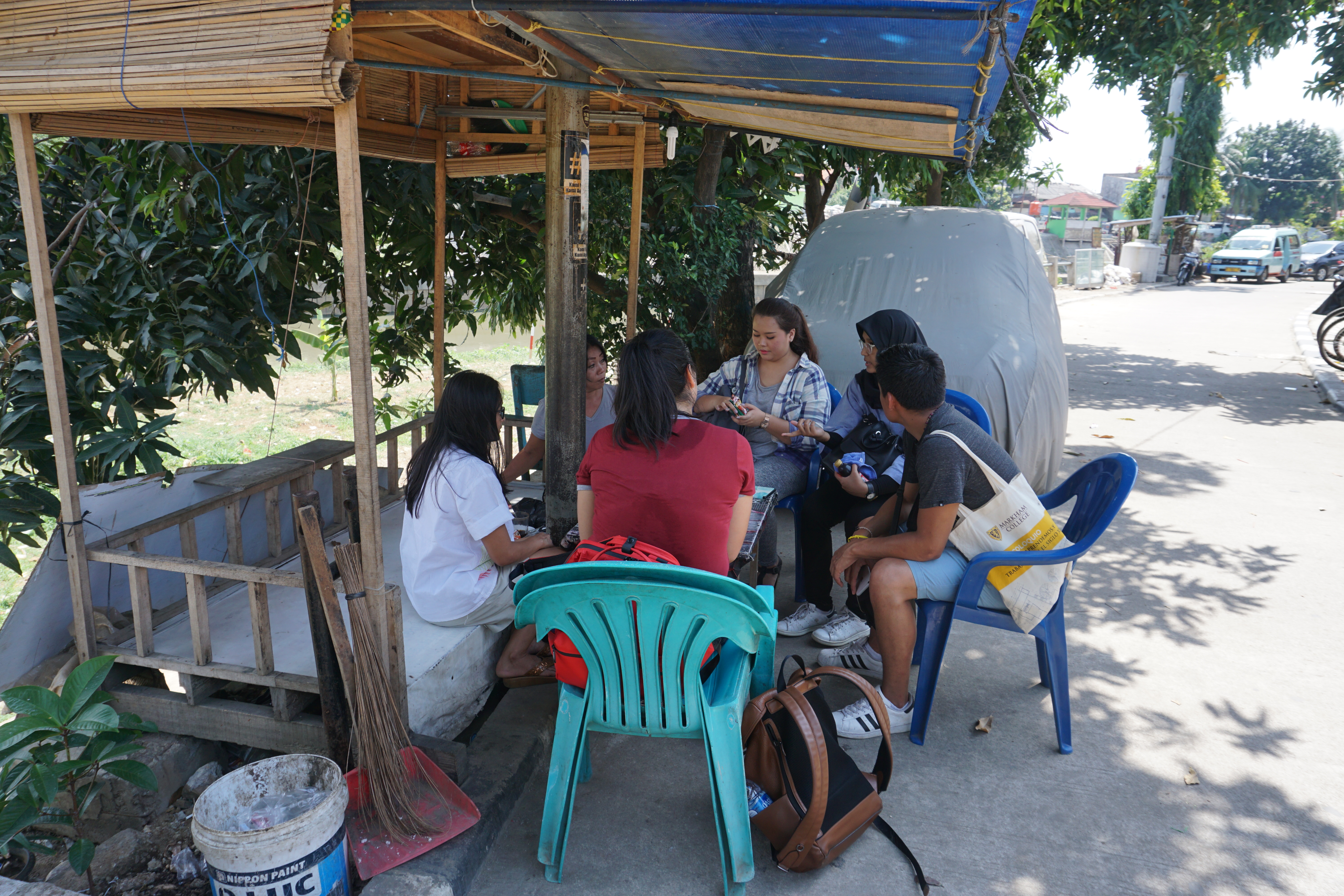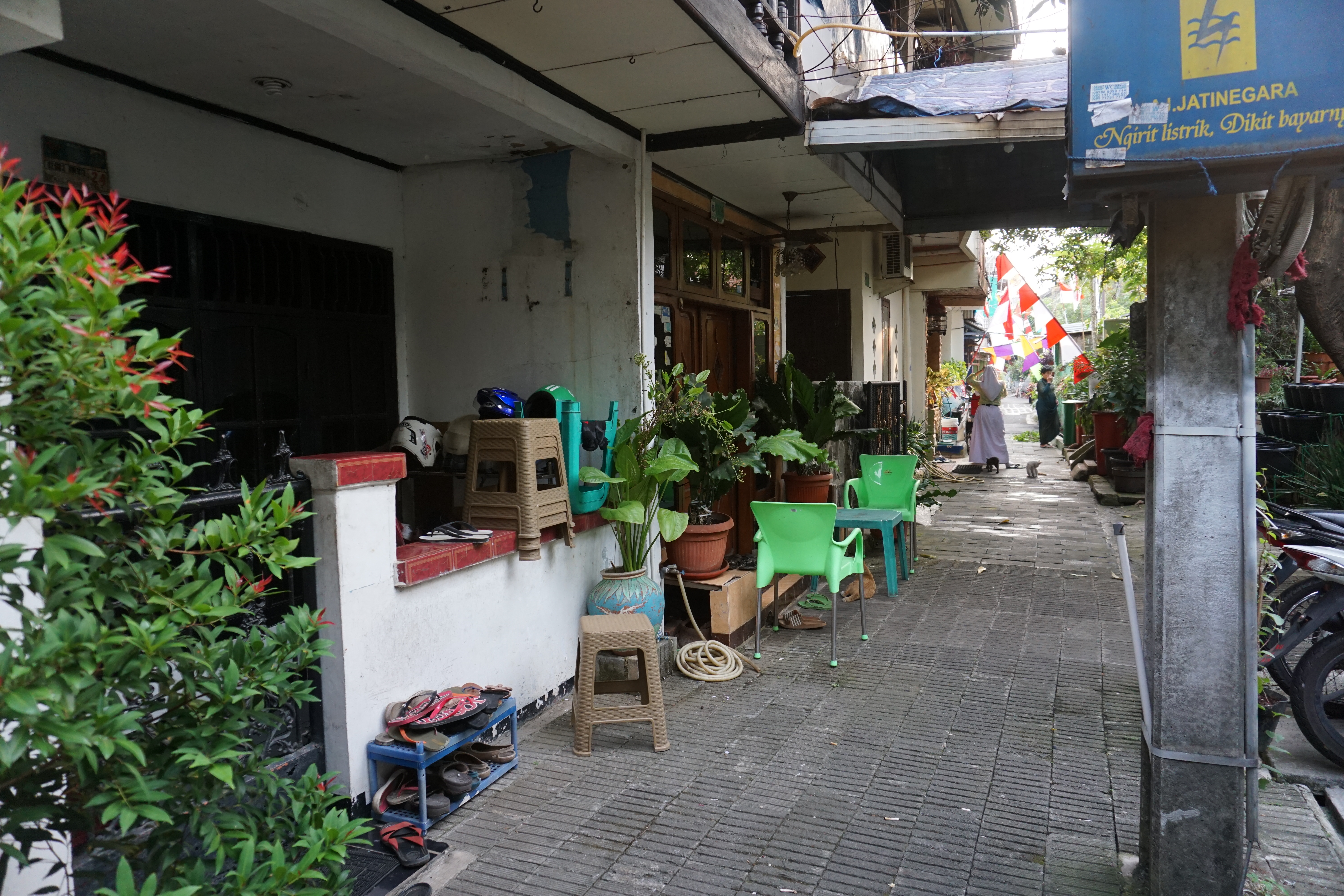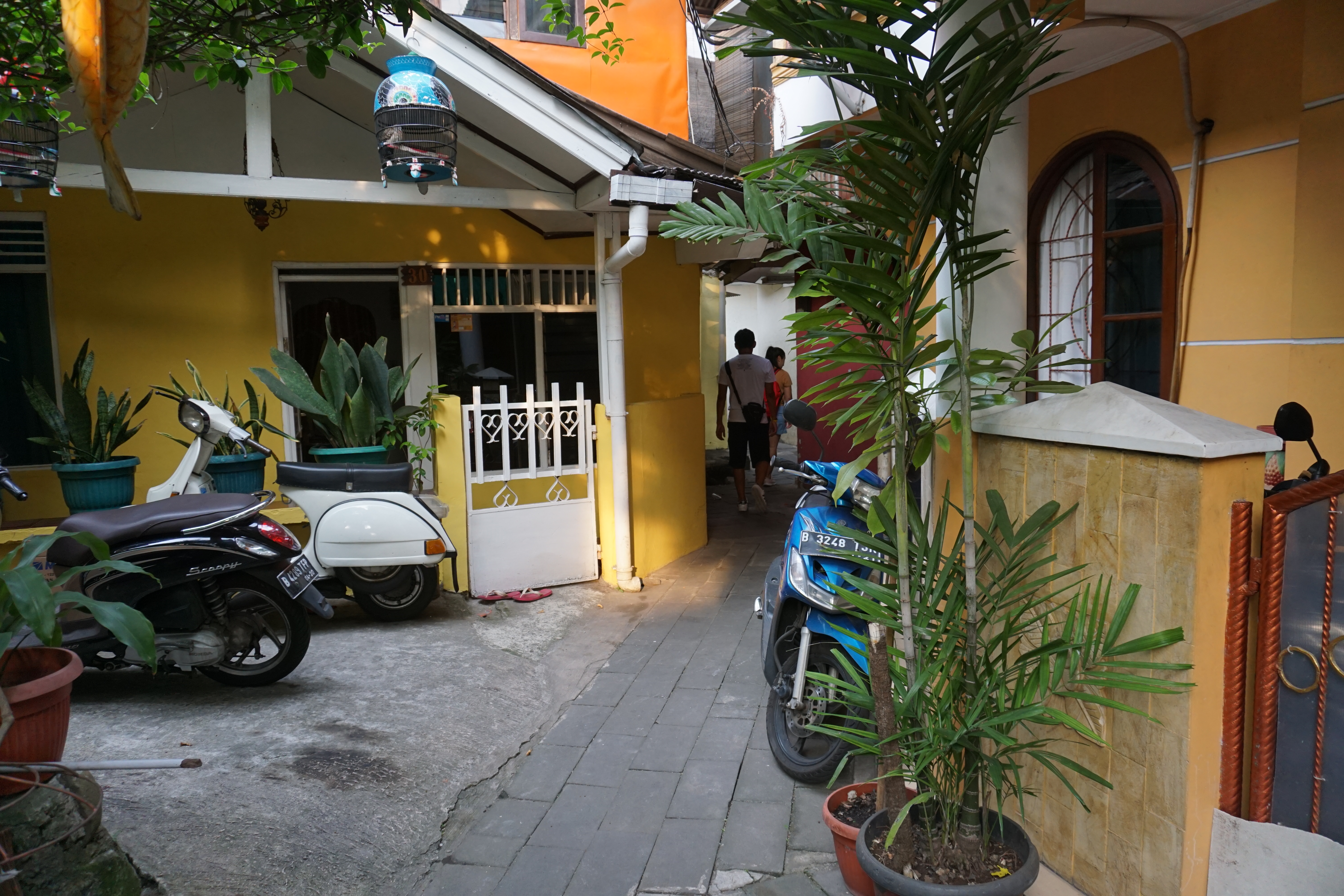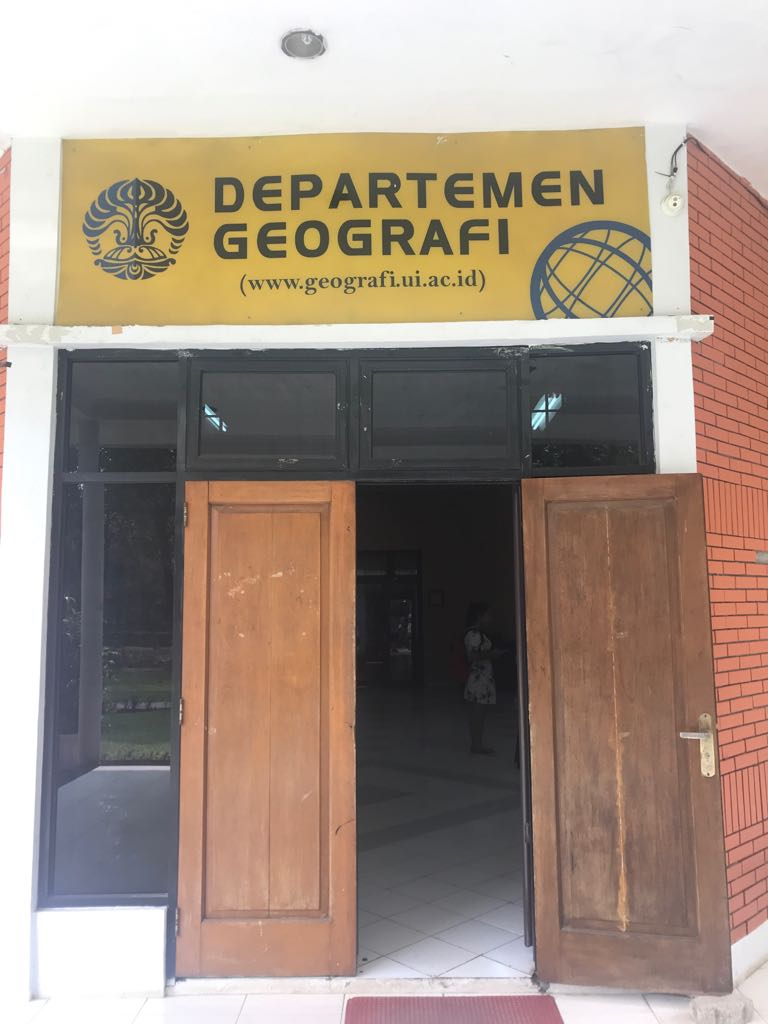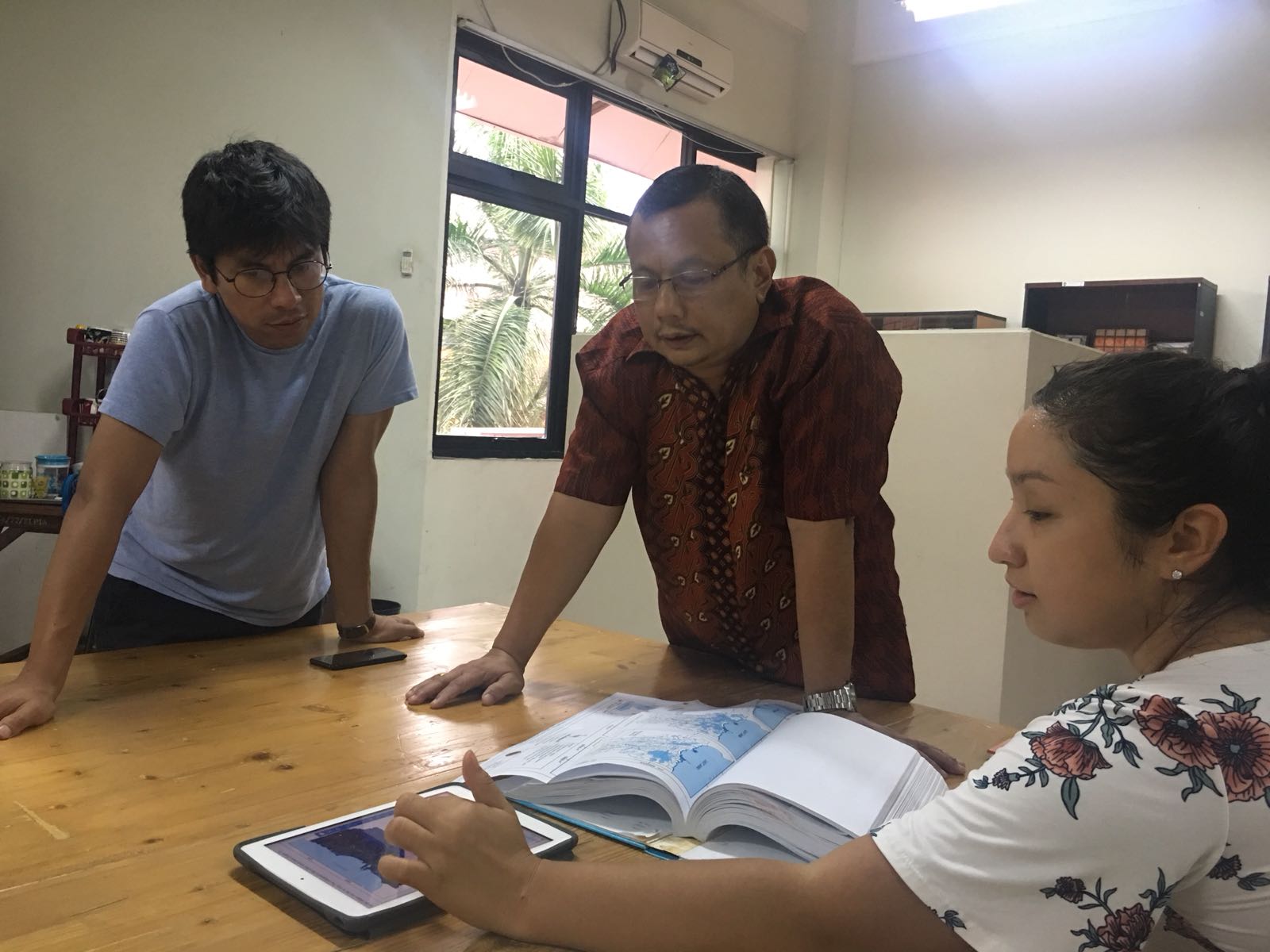No importa tu tamano, ni lo que en ese momento tengas entre las manos, al ver la senal te tienes que agazapar, tratar como sea de esconderte entre los chatos arbustos y quedar en silencio. Los ojos todos se enfocaran en esas dos personas. La mama que lleva de la mano a su pequeno y que se detiene de improviso. Con esa naturalidad en su movimiento se agacha a los pies del nino para amarrarle las zapatillas. El nino casi instintivamente extiende sus brazos a los costados, preparandose para mantener el equilibrio y con una gracia casi torpe trata de levantar su pie pero consigue mas que todo levantar su rodilla. La mama lo regresa a su posicion normal, con solo un distraido gesto, con casi solo su voluntad, sin tocarlo o mirarle a los ojos. Y tirandose el bolso hacia la espalda empieza a atar los cordones. Y lo hace en tres partes. Primero entrecruza las agujetas y tira de ellas fuertemente. Luego hace una oreja y la asegura con un nudo. Finalmente hace la segunda de las orejas, asegura el nudo y acomoda los excesos. Cuando se levanta y lo toma de la mano para seguir caminando, las imagenes vuelven a difuminarse y la bulla de los espectadores renace progresivamente. Ya se escuchan algunos gritos. Se escuchan algunos reclamos. Y sientes que alguien esta detras de ti, esperando a que dejes de interrumpir el camino.
Archivo de la categoría: General
Higher Speed
From the very first hours in Bangkok, it could be felt a special level of intensity in the city. Among other elements, you could witness an additional speed of the people walking in the street, an additional layer of diversity in the restaurants and shops, and a juxtaposition of the contemporary growth of the city with some very local elements of the built environment. When exploring the city, one could find a very popular Japanese restaurant with an amazing variety of beers and dishes from that country, all behind an infinite density of cables hanging over the street. At the same time, it would immediately call the attention the fairly well-developed infrastructure overlaying the continuous presence of the golden architecture and symbols of the country in almost every big building, public space or crossroad. Naturally, another omnipresent element in that mosaic was the water, which is what we came to study in the city. The group of interviews that we had in this city introduced us to the idea of a metropolis whose familiarity with the water could be dated up until the agrarian origins of the canals that today go through the urban area. Nowadays, all those canals are part of a complex infrastructure that is devoted to carry the increments of water in the rainy season and eventually take it to the sea. In addition, something that entirely contrasts with the two cities that we visited previously is that the canals also play a role as a means of transportation for Bangkok with a very smart system of water-taxis that cross the city or take the people from one edge of the Chao Praya River to the other. One cannot help to envision this level of coexistence with the water as a possible future for Manila, Jakarta and other cities where the water is perceived as a latent threat.
As in the two previous case studies, the interviews and research that we carried out took us to one specific site, Phoemsin Village. It was an informal settlement in both sides of the Song canal near the Don Mueang airport. Among the objectives of the government is the widening and deepening of the canals of the city, in order for them to perform better the task of serving as a container and pathway for the increase of the level of the water. One of the things that hinders that task is the presence of communities that live in the informal settlements in the banks of the canal. Something quite interesting is that, despite the people in the area do not have legal title to the land, there appears to be clear consciousness of the impracticability of making a complete removal of the residents of the settlement. Be it for the conviction on the unfairness of a forced displacement of the communities or for the fear of the political costs of such a program, the projects developed by the government have procured to keep the residents of the informal settlement in their original place. With that objective, the government has developed several stages of housing opportunities. Despite the relative success that the program appears to have had, this case shows some clear differences with the previous two cities, since the intervention of the state has come with a very little explicit participation of the people. On the one hand, when asking professionals that had worked for the government about the input of the residents in the design of the developments, the main reference that we received was that of the different colors that the stages of the developments have. On the other hand, when asking the own residents of the neighborhood about practices or strategies that they adopt in anticipation to episodes of flooding, we were also told that there were not particular physical elements or organizations that they rely on, and that they trusted the work that the government has been doing in order to deepen the channels for avoiding the flooding of the area. All in all, the community that we visited seemed to have a very thriving environment and with a lot of room for activities in the public space, a landscape that contrasts very starkly with the very precarious shacks that are still located in the other edge of the river.
Upstream Marikina River
I don’t even remember where I heard that of the two things to which a person could stare forever and ever, the fire burn and the water fall. Worried so much throughout this trip by the destructive effects that water can have for the daily life of entire communities, there were not many moments when we stopped to watch the water in its beauty as we did today in Wawa Dam, northeast of Metro Manila. The rural landscape that you find along the river over here is a diametrically different type of coexistence that the water has with the people than in the two cities that we have visited so far. The rocks, the waterfall, its sound, the surrounding green did nothing more than remind me of the similar places along the Vilcanota River that I used to visit with my family when I was a child. Of course, something that you don’t find there in the Andes and that is so common along the Marikina River is the use of bamboo. I will not try here any clever description of the different benefits of using bamboo in the building of houses in the edge of bodies of water, I shall leave that to the big-time expert on that, Astrid. I can only choose one of the million pictures that I took of this amazing house, that in a beautiful synthesis combines rather contradictory ideas such as strength and flexibility, space and verticality, definition and incompleteness.
An unexpected friend
Though he has not yet reached the thirties, he has already a beautiful family: his wife Elaine, a lovely Italian-looking lady, and their 3 children. Elaine and him are Christian and attend to service every Thursday and Sunday in one of the many “Iglesia ni Cristo” of the city. I know that it is a stereotype but I cannot help to attribute much of his kindness to his religion, since basically every practicing Christian that I have personally known has that sort of tranquil soul when you talk to them. When he was younger he had the fortune to get to know almost all the cities that compose Metro Manila. He learned how to drive when he was only thirteen or fourteen years old and would drive her grandmother’s car all over the place. That is how he can very well explain what is going on with the floods in Navotas, Caloocan and Malabon, and also tell you why is it that there is a wall surrounding the La Mesa Watershed in the east of the metropolitan area. He recalls one of those occasions as the time when he had to spent the most time stuck in the traffic jam. He had just taken her grandmother to buy some groceries and when they entered the highway he saw that the cars in front were all stopped and, since the level of the water reached almost the knee of a person, he just had to stop the car and wait in the place for seven hours. Not being able to go anywhere, he had time to go further by walk and see the situation closely and even go to a restaurant and get some food for his grandma and him. Fortunately, he nowadays lives in a house that does not suffer that much with floods. He recalls that it was during the heavy floods of 2009 the only time that there was a moderate level of flooding at his home, but it was not of the severity that made so many people lose all their belongings in other parts of the city. He is not the most outgoing person that exists, he usually goes through some doubts when approaching a new person, but he usually manages to do it. In most of the cases, his youthful air and his kindness make people like him quite quickly. That is why it was just some minutes after we began the fare in his Grab taxi that he decided to speak to the person next to him, me: “excuse me, boss, and where do you come from?” Two days later, he had helped us in our research in Barangay Tumana as driver, intermediary, translator, security, negotiator, photographer, tour guide and, above all, local friend, and I had already gotten used to the “excuse me, boss”, “thank you, boss”, “see you tomorrow, boss”.
What to do next?
We first heard about Barangay Tumana (Marikina City) through the article of Nick Espina, a scholar introduced to us by Marikit Soliman, who, in turn, was introduced to me by Erlyn Rachelle, a classmate of mine that I was fortunate to meet in the GIS Institute course that I took in June. This kind of chains have explained so many of the experiences that we have had in this trip and that I have had in the recent time that sometimes I wonder if I should just try to ride my luck rather than my effort. Unfortunately, Nick, with whom we met during the weekend to talk about his paper, did not have the contact of the people leading the Barangay anymore, since there had been elections in the recent years. Despite of that, this candidate of a site made much sense to our research as a vulnerable informal settlement on the banks of a river and we chose it for our visit. Two days later, just informed by that meeting, the weekend news about the floods in the area and a small exploration over google street, we took a Grab (the equivalent to Uber in Manila) directly to the place. In Jakarta our modus operandi had been to do a first exploration of the neighborhood by ourselves and then to come back with a local person who would ease the communication and would help us conduct some information gathering technics. However, thanks to the unexpected help of our Grab driver, from the very beginning we were able to go directly to the best sources of information: we talked first with the Captain of the Barangay, the leader of a population of around sixty thousand people, a guy very pleased to talk with us while also signing some papers that were brought to him during the conversation. He was also kind enough to assign a person for coming with us in our walk around the neighborhood. The moment that the place was going through was the opposite to that of our visit to Melayu in Jakarta. Here not only we are in the rainy season, but a tropical storm had hit the area last weekend, and this Barangay is located in one of the areas with the highest risk in the whole Metro Manila. That risk materialized during the weekend and in our walk we could see the level of losses due to the overflowing of the Marikina River. Most of the houses had a giant pile of things in front, which was composed of all the belongings that they had in their first floor and could not manage to save from the water that in the majority of cases covered most of the first floor and that in the lower areas of the neighborhood reached even the top of the second floor. What to do next?
A Matter of Language
Manila has been a bit rough for me. I came with a cold that I caught back in Indonesia. In part because of having been fortunately a fairly healthy person and in part because of not paying much attention to the everyday things of life, like making the bed or cooking an egg, a cold usually takes a toll on me. It is extremely difficult for me to understand what the symptoms are or what the process of it is. How can a person tell if one has a fever or not? You are inside you, so how can you have a sense of your own temperature. It is like when the doctor asks me: Oh, you have a stomachache, tell me, what kind of ache is it? In my head that one really falls under the category of the metaphysic questions and my inability to answer would normally bring the bad humor both of the doctor and of the person going with me to the clinic. But this cold is the only suffering of this trip, hopefully to be fixed with a ton of pills that the doctor already prescribed. What is not a suffering is the life in a city like Manila that has real rain. 10 years of my life I have spent in Lima, a city where the slightest drizzle was already called a rain by the people, before them putting on a large coat as if we were in Kaliningrad. I think there is a thing with the language in this matter. Something similar to what I think my Finnish friend Timo told me once about the different names that snowing has in his native Oulu. For instance, a person like me coming from Cusco, a city where it never snows, did not know the difference between the icy snow and the snow that is perfect for making snowballs and snowmen, nor had a different name for those two kinds. The first time I heard rain (“lluvia”) referring to that drizzle in Lima it sounded very weird. I would use the word “garúa” or “llovizna” for those shy fallings of water. I would call “lluvia” a real rain like the ones that I have seen here in Manila, one that would make people use ponchos and umbrellas, and that will turn the taxis into the most valuable good for the human being. And we would call a “chaparrón” to those showers with such an intensity that you could feel the god making a true effort to throw the water ferociously to the city while making the lightning sound like a final war. Occasionally rain was combined with solid pieces of ice (“granizada”) that after a while would leave a city completely covered in white, a very different white than the one of a snowstorm, that very rarely happens to fall in Cusco. Evidently, having seen myself the rivers formed in the streets of the city take with them Ticos (small cars popular in Peru in the 2000s) with their drivers inside as if they were small boats, my view of the rain in Manila was slightly different than the one of my groupmates. It has been a moderate level of rain these first days in the city, in many moments combined with a very strong wind. A new element is that the temperature is still fairly warm, and, under the umbrella, people are wearing t-shirts or even sandals. There are not people wearing boots and raincoats. A reality that must be true here in Manila and anywhere in the world: traffic goes simply crazy and getting a taxi becomes an almost impossible task. More for us, foreigners, since we could not see any taxi available in the street and were told by the smartphone app over and over again that all the taxis were busy. It took us almost 5 extra hours to manage to get a taxi booked in the app, time that we had to spend having an early dinner and walking around the mall where we had had an interview earlier in the day. Quite an interesting first taste of the monsoon season of the Philippines.
The Second Floor City
A little more than a year ago, CONURB, the research group of the Catholic University from which I am a member back in Peru put me as the leader of one of its various projects: the creation of an application that would serve as a platform for people to know the level of risk of flooding of the area where they live or plan to live. It would show the level of risk through a traffic light, red, yellow or green, based on the reports of information uploaded by the own residents of the metropolitan area of Lima. It was one of many initiatives launched in Peru as a response to the catastrophic flooding that the coast of the country suffered in the summer of 2017. It was called “Mapa de Riesgos – CONURB” (CONURB Risk Map), uncreative name although with the intention to keep positioning the name of the group amid the community interested in urban matters. The idea was to participate in a competition of ideas launched by the Ministry of Production in order to get some funding. The process of my moving to Boston to begin the master studies among other situations put a halt to the project. Today I recalled that old application in a conversation about one of the most amazing projects I have learned about in the recent time: PetaBencana.Id. (link) a platform for crowdsourcing real time information about flooding in Jakarta. The great Astrid managed to get a meeting with a group of young people working in the development, maintenance and escalation of the platform. Nashin, Pritta and Emir explained to us with great patience the details of the functioning of the application and the facts that have made it that successful. Clever elements developed through both creativity and experience like identifying the unpredictability of the location of the flooding events in the city, the advantages of using already existing channels like twitter instead of the development of a new application or the use of automatic replies in order to use the right level of intrusiveness with the users, were examples of the several things to learn from the project of this organization. In addition, it struck me the fact that the project did not involve any patent of industrial property to “protect” any idea, maintaining itself true to the concept of openness of information (a small reminder of the uselessness of the idea of intellectual or industrial property in the 21st century world) and, on the contrary, showing a strong willingness to collaborate with similar projects in places like Mexico, Hong Kong, Saigon or, why not, Lima. Even when we asked about the topic of our research, it was amazing that in a way the same philosophy underlying the development of this platform also informed their assessment of the problem of flooding in the city of Jakarta. This idea of drawing on the knowledge already developed by people throughout the time and of accepting a coexistence instead of an antagonism of the people with the flooding episodes. The rich conversation took us to the necessity of thinking how the built environment of a place like Jakarta might need to progressively move upwards in order to make the first one or more levels of the buildings prepared for the reception of the water on a periodic basis, an idea similar to the design of the “Vertical Kampung” that earlier in the day we discussed with the people of the NGO Ciliwung Merdeka. Little by little it keeps coming the idea, so relevant for my other research about urban verticality, that Jakarta is in a path to become what in the conversation occurred to me that would be in the future a “Second Floor City”.
Turquoise
About a month ago I had the chance to visit Philadelphia for the first time. Besides the unbelievable experience of walking the epicenter of the conversations about the American Revolution in the eighteenth century, I also did a part of the hipster circuit and visited the Magic Gardens by Isaiah Zagar. The place is a big installation composed by a house, its yard and some attached buildings all decorated with inlaid work of different tones of turquoise, a mosaic at the same time chaotic and beautiful. The moment I saw this house in our second visit to Kampung Melayu I could not help to think in that visit to Philadelphia, since the second floor of this house looked like pulled out from the Magic Gardens. The owner of this house gave us an incredibly valuable time to talk in the tent that lies across her store in the edge of the embankment that separates the houses from the Ciliwung River, all of this with the language help of our great friends Zaza and Cintya. She explained to us that the building of the embankment involved a strong impulse of the government and the relocation of the people that was previously settled in the edge of the river to social housing buildings in a higher area. That is the process that gave birth to this interesting street on top of the embankment, used as a public space by the people of the area. The residents that were not relocated accommodated their houses to this new configuration and performed their own strategy. They organized in a way that allows them to move themselves and their belongings to the second floor when the level of water of the river overfloods the height of the embankment. The first floor, a functional space full of belongings that can be carried and made of materials that are easier to clean up later, and a second floor, a space for the dwelling and the most important objects, and that is also the object of the decorations.
Kampung Melayu
A couple of weeks ago I was in the final review of one of the sections of urban design and planning of the summer program of the Harvard Graduate School of Design as a guest critic. One of the observations made by another guest critic to one of the students was about the lack of a clear grid of the streets of the proposed development in South Boston. I could not help to intervene and ask a sincere question about the need of such organization of the area. Although rational, easier for people to locate themselves and easy for the city to manage it, a city with a grid pattern has in my opinion a negative component of homogeneity. One of the things I use to miss in American cities and in some European cities was those unique corners that happen in a city like Cusco that did not have that much of a rational urban planning. That small chaos of the streets of a not rationally planned city is something that came to my mind today in Kampung Melayu, a medium maturity informal settlement in the east of Jakarta, in the banks of the Ciliwung River. Unlike the settlement we visited the first day, people living in Melayu have been around this area for a long time, that is, two or three generations. Enough time for already having been able to develop a neighborhood of two or three stories houses, schools, mosques, stores, restaurants, streets, alleys and all the elements that typically define a city. What impressed me the most is how beautiful and vivacious the neighborhood was. Not only it looked like an area where people had gone out of a precarious situation, but it looked like an area where one would want to live. The lack of state-led planning disappeared in this area any shadow of a grid and yet the spontaneous pattern of life that was progressively developed here gave birth to edges like the one that is in the picture. We came by foot over the alley that is in the top picture and suddenly we run into this house that had the fortune to be in the corner and, maybe as a compensation for the less privacy, enjoyed a sort of semi-private space, that along with the varied assortment of plants gave the place a lovely sentiment of warm, only broken some steps ahead by the giant mouse that caught the eye of Astrid and made Edu run for his life.
Jakarta | University of Indonesia
As happens in the whole academic world, it is difficult to determine whether a research topic is original or one has not yet looked for sufficiently among the different authors that have studied the subject. Naturally, that is a more complex disquisition when you are working a topic about a city located thirty-eight flying hours away from your current city. That is the reason why we appreciated a lot to have made a visit to local researchers that have done conducted analysis of their own city. Dr. Mangapol is a geographer from the University of Indonesia. It took us a while to finally meet him in his office in the campus of that university because he had to leave to pay his last respects to a colleague of him that had passed away in the previous day. While waiting in the hallway of the Department of Geography we were able to observe several research projects in boards that were hanging from the walls, many of which had the topic of flooding as one of the main concerns in the geospatial analysis. Once in the meeting we were able to see the physical doctoral dissertation that originated the paper that we had read. Although much patience was needed by both parties because of our lack of knowledge of Bahasa, our conversation in English allowed us to see the methods of identification of the areas of the city prone to flooding. According to the geographic study, that propensity is correlated to the existence of certain type of landform and certain type of land use in an area. However, in order to determine which parts of those areas were prone to disaster, it had to be added the layer of density of population. The result of that analysis was the map that we will include in the research, that shows how the higher risks are associated both to the paths of the rivers and channels that go through the city and the closeness to the northern bay. The most useful outcome of the conversation has been to be able to give a technical support to that intuition that the closer you get to the sea the higher the risk of flooding is.


